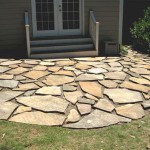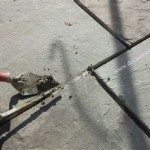DIY Patio Paver Cutting: Mastering the Art Without a Saw Blade Orientation Tool
Creating a patio using pavers can significantly enhance the aesthetic appeal and functionality of outdoor spaces. While professional installation ensures precision and efficiency, undertaking a DIY paver patio project offers cost savings and personal satisfaction. A common challenge DIYers face is how to accurately cut pavers, particularly when lacking specialized tools like a saw blade orientation tool. This article details methods for effectively cutting patio pavers without relying on this specific instrument, focusing on accuracy, safety, and achieving professional-looking results.
The absence of a saw blade orientation tool necessitates alternative approaches to ensure straight and accurate cuts. These methods primarily involve scoring and breaking pavers, utilizing a chisel and hammer technique. While saws offer cleaner cuts, this approach is a viable option for those seeking a more budget-friendly or less equipment-intensive solution. Precision in scoring is paramount to achieving a clean break and minimizing waste. Careful planning and execution are vital for a successful project.
Precise Scoring Techniques for Paver Cutting
The foundation of effective paver cutting without a saw relies heavily on the scoring process. Scoring involves creating a defined line of weakness on the paver's surface, which then facilitates a controlled break. The key to success lies in achieving a consistent depth and width of the score line across the entire length of the intended cut. Several tools can be utilized for scoring pavers, including a brick hammer with a chisel edge, a masonry chisel paired with a standard hammer, or a specialized paver splitter.
The brick hammer serves as a dual-purpose tool. Its chisel edge is used for scoring, while the flat face is used for gently tapping the paver to encourage the break. When using a masonry chisel and standard hammer, ensure the chisel is held firmly and angled slightly towards the direction of the cut. This angle helps to create a deeper and more defined score line. The paver splitter, while not technically a scoring tool in the traditional sense, provides a controlled crushing action along the intended cut line, effectively creating a weakened area.
Regardless of the tool chosen, precision is critical. Before scoring, accurately measure and mark the intended cut line on the paver using a pencil or marker and a straight edge. A carpenter's square is useful for ensuring right-angle cuts. Once the line is marked, carefully score along the entire length multiple times, applying consistent pressure with each pass. The depth of the score line should be approximately 1/8 to 1/4 inch, depending on the paver's thickness and material. Deeper scoring may be required for thicker pavers. Multiple passes are preferable to a single deep score, as this reduces the risk of chipping or cracking the paver uncontrollably.
After scoring, inspect the line to ensure it is uniform and continuous. Any breaks or inconsistencies in the score line can lead to an uneven break. If necessary, re-score any areas that appear weak or shallow. Pay particular attention to the edges of the paver, as these are often the most prone to chipping during the breaking process.
Breaking Pavers Safely and Effectively
Once the paver is adequately scored, the next step involves breaking it along the score line. Several techniques can be employed, each requiring a slightly different approach. One common method involves placing the paver on a bed of sand, ensuring the score line is positioned directly over a supporting edge. This allows the paver to bend along the score line when pressure is applied, facilitating a clean break.
Apply firm, even pressure on both sides of the score line. This can be done by hand for smaller pavers or by using your foot for larger, heavier pavers. Gradually increase the pressure until the paver snaps cleanly along the score line. Avoid applying excessive force, as this can lead to shattering or an uneven break. If the paver resists breaking easily, re-score the line more deeply and try again.
Another method involves using two chisels positioned directly beneath the score line on opposite sides of the paver. Place the paver on a solid surface, such as a concrete slab or a workbench. Carefully position the chisels and gently tap each chisel alternately with a hammer. This creates a focused force along the score line, encouraging the paver to break evenly. Exercise caution when using this method, as the chisels can slip, potentially causing injury. Wear safety glasses to protect your eyes from flying debris.
For pavers that are particularly difficult to break, consider using a specialized paver splitter. These tools utilize a lever mechanism to apply significant pressure along the score line, ensuring a clean and precise break. While a paver splitter represents a higher initial investment, it can significantly improve efficiency and accuracy, especially when working with a large number of pavers.
Regardless of the breaking method chosen, always prioritize safety. Wear safety glasses to protect your eyes from flying debris and gloves to protect your hands from sharp edges. Work in a well-ventilated area to minimize dust inhalation. If using a hammer and chisel, maintain a firm grip on the chisel and strike it squarely with the hammer to prevent slippage. Regularly inspect your tools for damage and replace them as needed.
Alternatives and Considerations for Complex Cuts
While scoring and breaking are effective for straight cuts, creating more complex shapes, such as curves or intricate angles, presents a greater challenge. These cuts often require a different approach and may necessitate the use of power tools. However, even without a dedicated saw blade orientation tool, certain techniques can be employed to achieve satisfactory results.
For curved cuts, consider using a series of small, straight cuts to approximate the desired curve. This method involves scoring and breaking the paver in multiple small segments, gradually shaping it to the desired form. While this approach is time-consuming, it allows for greater control and precision compared to attempting a single curved cut. A nipping tool can then be used to refine the edges and create a smoother curve.
Angle grinders equipped with a diamond blade can be used for making more accurate and smoother curved or angled cuts. Although this necessitates the use of a power tool, it provides a significant improvement in cutting performance compared to manual scoring and breaking. When using an angle grinder, always wear appropriate safety gear, including safety glasses, a dust mask, and hearing protection. Ensure the grinder is equipped with a guard and that you are familiar with its safe operating procedures.
When working with pavers of varying thicknesses or materials, it's important to adjust your cutting technique accordingly. Thicker pavers may require deeper scoring or multiple passes to achieve a clean break. Pavers made of softer materials, such as sandstone or limestone, may be more prone to chipping, requiring a more gentle approach. Experiment with different cutting methods and tools to determine the best approach for the specific type of paver you are working with.
It is also crucial to consider the overall aesthetic of the patio when making cuts. Uneven or poorly executed cuts can detract from the overall appearance, even if the patio is otherwise well-constructed. Take your time and strive for accuracy, paying attention to detail. If necessary, practice on scrap pavers before cutting the final pieces to gain confidence and refine your technique. Remember that a well-laid and properly cut patio adds value and enjoyment to any outdoor space.

Simple Diy Curved Cut In Patio Pavers With Harborfreights Grinder Masonry Blades

How To Cut Pavers And Bricks With Portable Angle Grinder Diy Paver Walkway Transformation

How To Cut Pavers And Bricks With Portable Angle Grinder Diy Paver Walkway Transformation

How To Cut Concrete Pavers In 3 Ways

6 Ways To Cut A Paving Stone Western Interlock

How To Build A Paver Patio Rogue Engineer

How To Cut A Concrete Slab Like Pro

Cutting A Round Hole In Patio Pavers

How To Cut Pavers The Home Depot

How To Cut Concrete Pavers In 3 Ways
Related Posts








